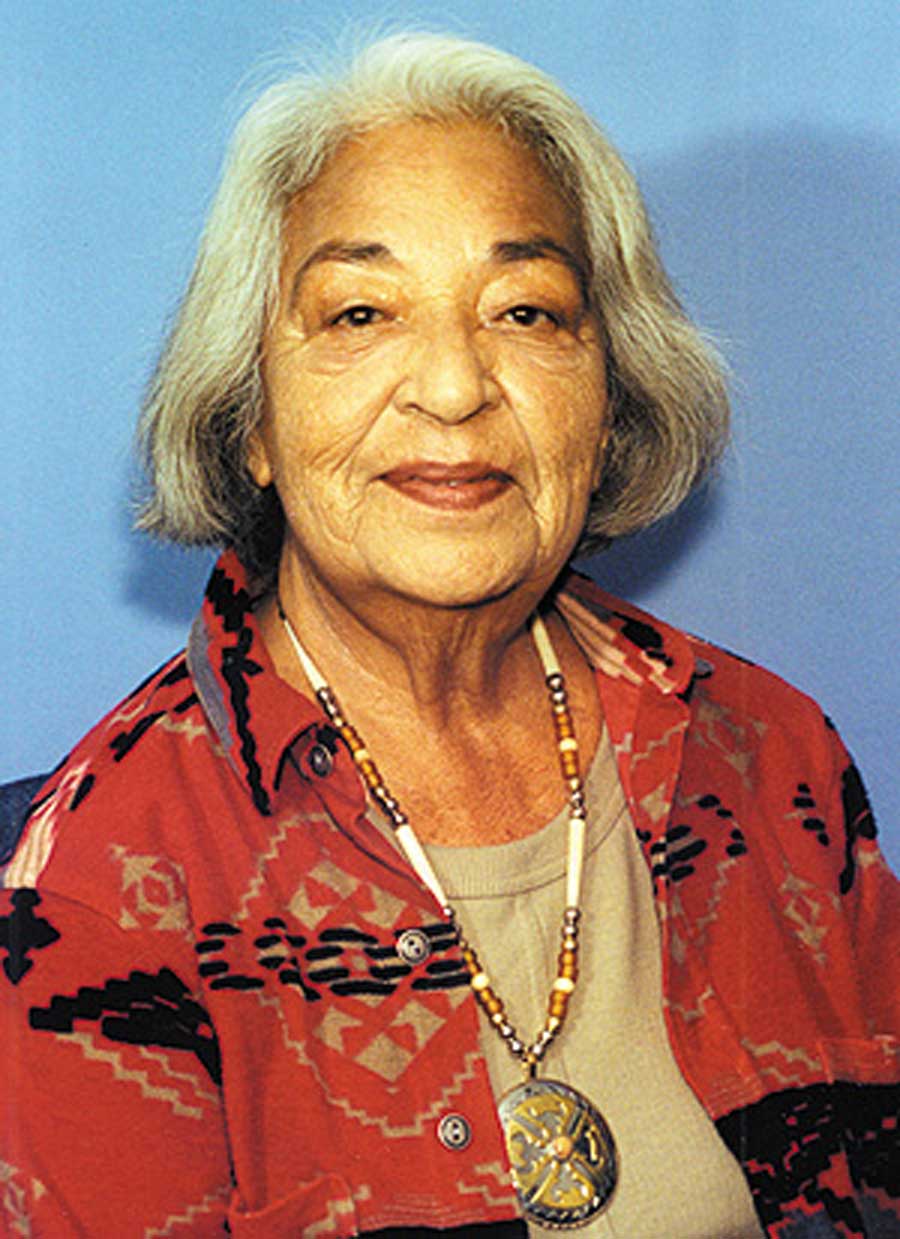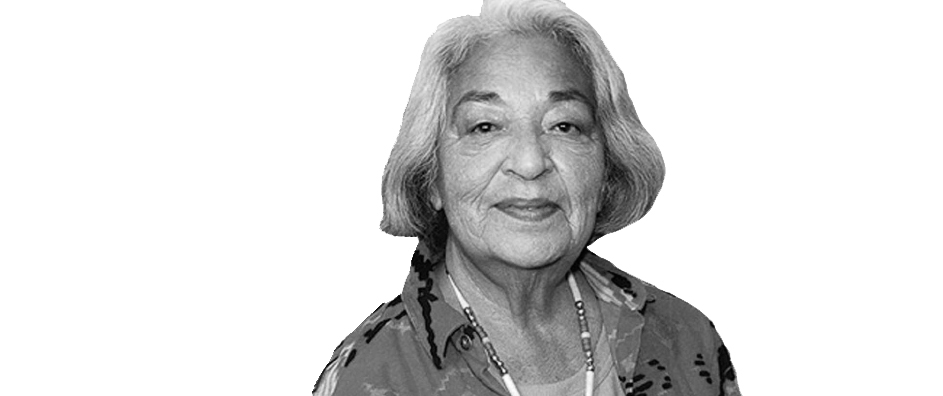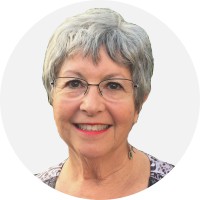The views expressed in our content reflect individual perspectives and do not represent the authoritative views of the Baha'i Faith.
What type of person draws to her funeral people of all races, ages, educational and financial levels?
According to her biographer John Kolstoe in Compassionate Woman: The Life and Legacy of Patricia Locke, “Some people pooled their meager resources to drive over 1,000 miles and slept in their cars,” while others, “flew into Phoenix and stayed at comfortable hotels.” So beloved was this woman that the service was aired live on radio in order for those unable to attend to listen to and feel a part of the celebration of her extraordinary life.
Born Patricia Ann McGillis on January 21, 1928, she was in later life given the Indian name Compassionate Woman. Her Lakota mother, Eva, and Ojibwe (also known as White Earth Chippewa and Anishinabe) father, John McGillis, an employee of the Bureau of Indian Affairs, raised Patricia and her sister on Indian reservations.

Patricia Locke
They trained their children in Native American culture and values, yet they both recognized the need for material education, as well. Patricia’s parents instilled in her, while still very young, a love for books and learning. They made sure, as Pat did later with her own family, that the children could move with ease in white society, while never diminishing their sense of identity as Indians. They maintained their Indian values and their participation in the rituals of their indigenous culture.
Despite the challenges of racial prejudice against Native Americans and significant financial struggles, Pat was determined to finish school. Kolstoe writes that she made do with but “two changes of clothes, and giving swimming lessons provided her with valuable cash.” Following her graduation from UCLA in 1951 with an interdepartmental degree in English, Anthropology, Geology and Physical Education, Pat went on to earn a teaching credential and a masters degree. She taught at a variety of universities around the country, but while raising her children, she chose to teach in the community so that her children could accompany her.
Even more important than her schooling were the lessons taught through example. For instance, after Pat and her sister were forced to sit in the back of the movie theater because that was the only area open to Indians, they returned home and told their mother they sat so far back that they really couldn’t see, since they were so small and the other patrons were so much taller. Her mother confronted the theater manager while her daughters watched. She warned him she’d organize a boycott if her daughters were ever again treated like second-class citizens. He bowed under that threat and from that day on Pat never backed away from a problem. According to Kolstoe, “As problems arose, she would unhesitatingly go to whoever was responsible and confront the problem directly, seeking a resolution.”
This brave forthrightness was part of Pat’s upbringing in the four main Lakota values:
1. Courage
She had the courage to stand up for her beliefs and to try to right what she perceived as unjust laws and unwarranted discrimination. She fearlessly faced those who would prefer to maintain the status quo.
2. Respect
Pat was sincerely respectful even when she disagreed with people—this is why she was able to be successful so often, and what in turn earned her the respect of both those who agreed and those who disagreed with her.
3. Generosity
Pat lived the Lakota way of giving and sharing more than accumulating.
4. Wisdom
When one learns how Pat gathered all available information and studied it in order to make informed decisions on how to pursue her goals, how tactful she was with those who disagreed with her, and how she went about mentoring others, we understand why most Indians who knew her called her Unchi (Grandmother).
Pat’s passion to fight for what she believed in led her to become a crusader for the rights of American Indians (the term she preferred to “Native American.”) She pursued and won the rights of American Indians to determine their own school curricula. She helped establish 17 colleges on various Indian reservations. Native language preservation was high on her list of priorities, and she also fought for women’s rights and environmental issues. Pat’s efforts were instrumental in the passage of the 1978 American Indian Religious Freedom Act that overturned the 1904 prohibition of Indian religious ceremonies. This led to her appointment to the Interior Department Task Force on Indian Education Policy in 1979.
Her comfort zone was unlimited. She felt equally at home with the very rich and the abject poor, and never distinguished between them. This brings to mind the sixth of the Seven Grandfather’s Teachings from Ojibwe wisdom:
Use your inherent gifts wisely and live your life by them. Recognize your differences and those of others in a kind and respectful way. Continuously observe the life of all things around you. Listen with clarity and a sound mind. Respect your own limitations and those of all of your surroundings. Allow yourself to learn and live by your wisdom.
Many years after her son, Kevin, embraced the Baha’i Faith, Pat Locke (her married name) did so, too. She was stunned to learn only two and a half years later that she’d been elected to the National Spiritual Assembly of the Baha’is of the United States. She had the distinction of being the first American Indian woman to be elected to that body, and was also the first American Indian of either gender to be elected by the other members as an officer.
Among her many other distinctions are a MacArthur Fellows “Genius” award in 1991 for her work worldwide in the preservation of indigenous languages; being both a Native American delegate as well as one of the Baha’i delegates to the 1993 Parliament of World Religions; and being honored in 2001 along with her son, Kevin Locke, with the Indigenous Language Institute’s Those Who Make a Difference award. These came during her lifetime, but didn’t end her honors. Posthumously she was entered into the National Women’s Hall of Fame in Seneca Falls, New York, in 2001; received the Race Amity Medal of Honor by the National Race Amity Conference in 2006; and in 2014 the Google Cultural Institute included her in their listing Showcasing Great Women.
The Baha’i teachings say that we should:
Attach great importance to the indigenous population of America. … these Indians, should they be educated and guided, there can be no doubt that they will become so illumined as to enlighten the whole world. – Abdu’l-Baha, Tablets of the Divine Plan, p. 32.
Patricia Locke’s life confirmed the validity of those words.
You May Also Like
Comments

















If it sounds like Patricia Locke made an impression on us both, you are absolutely correct.